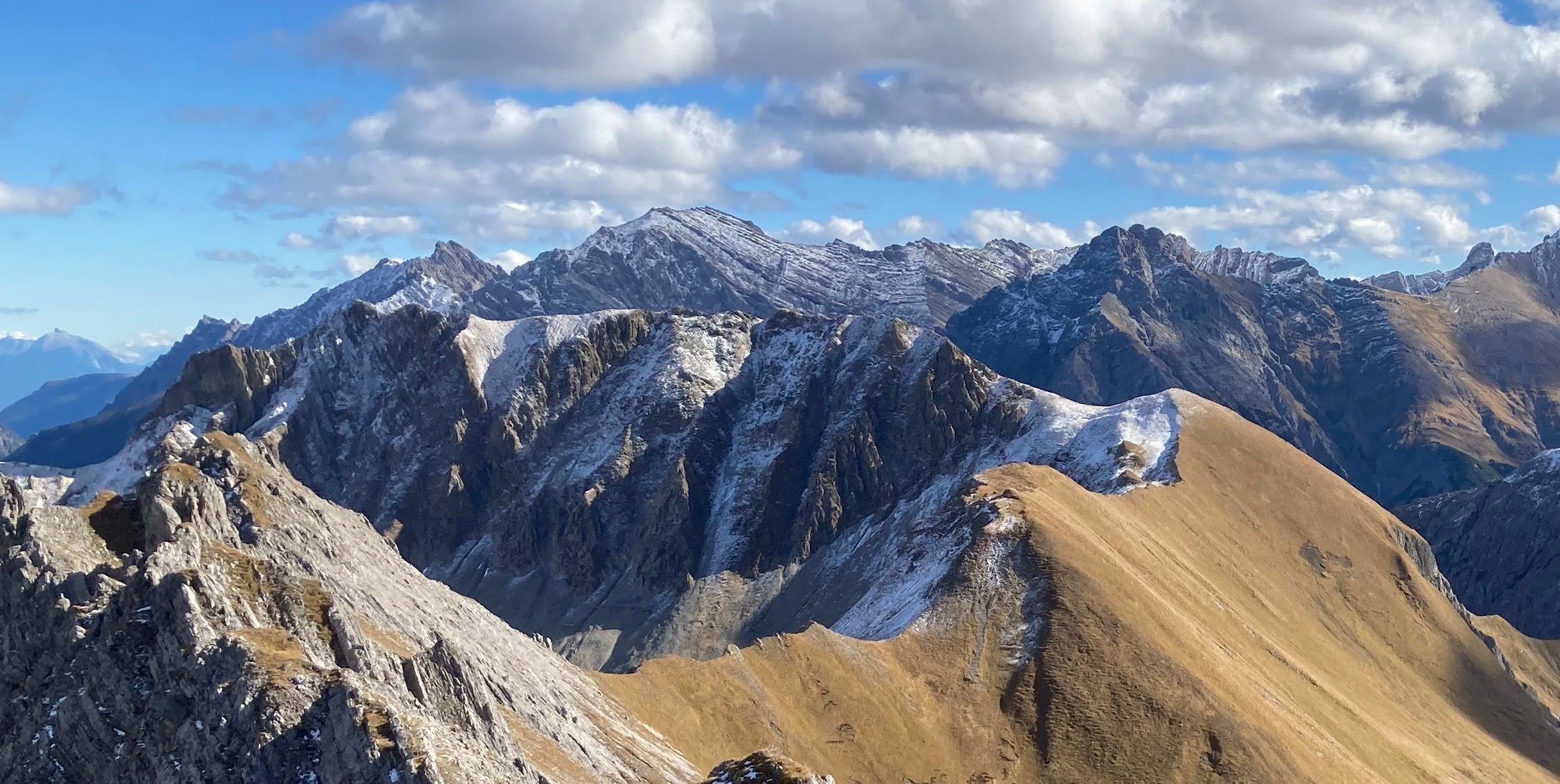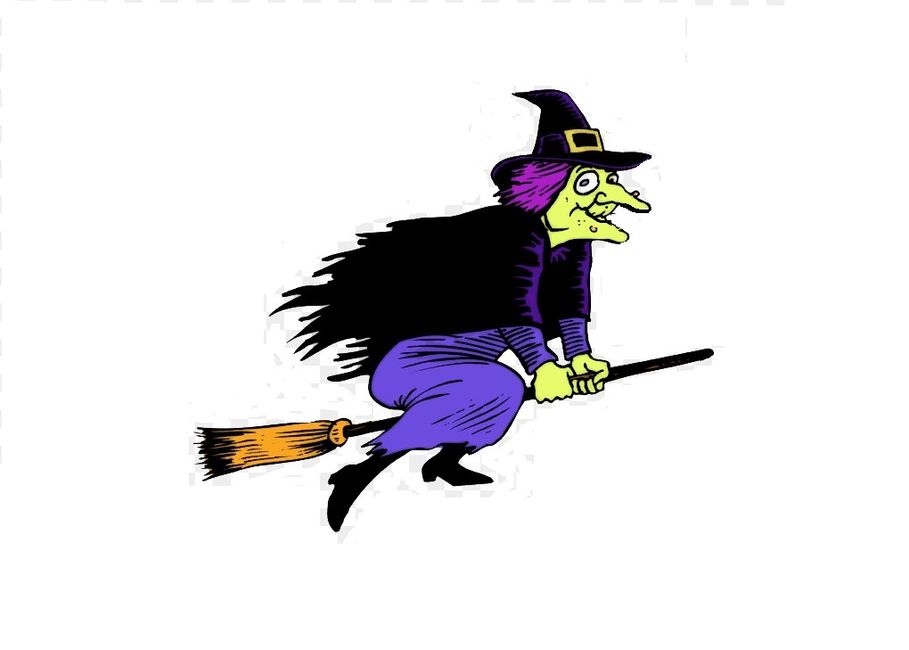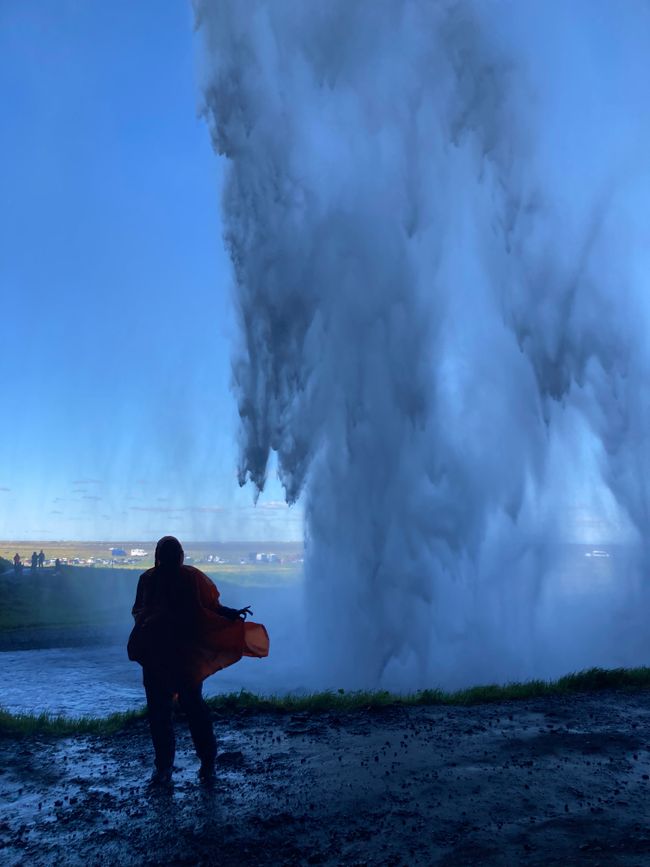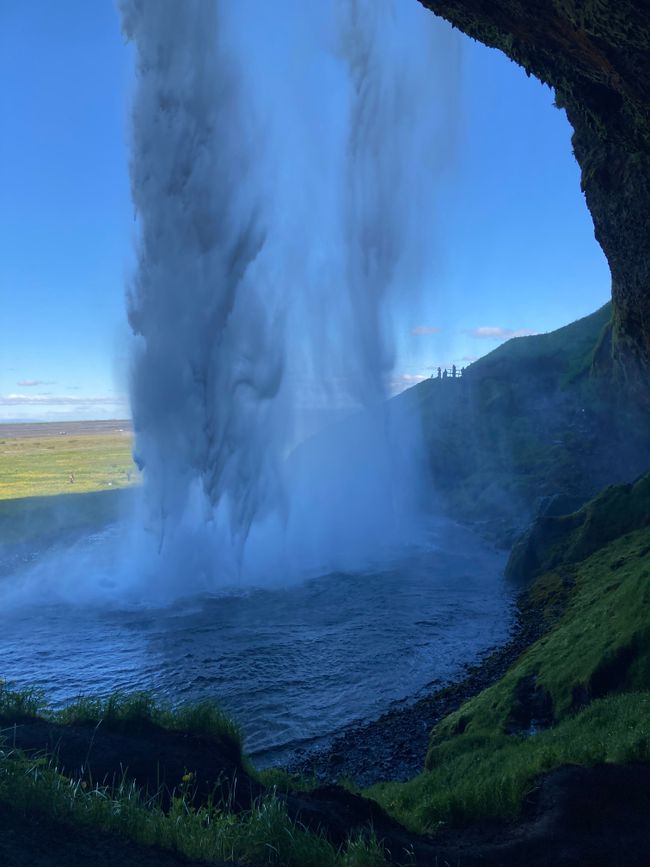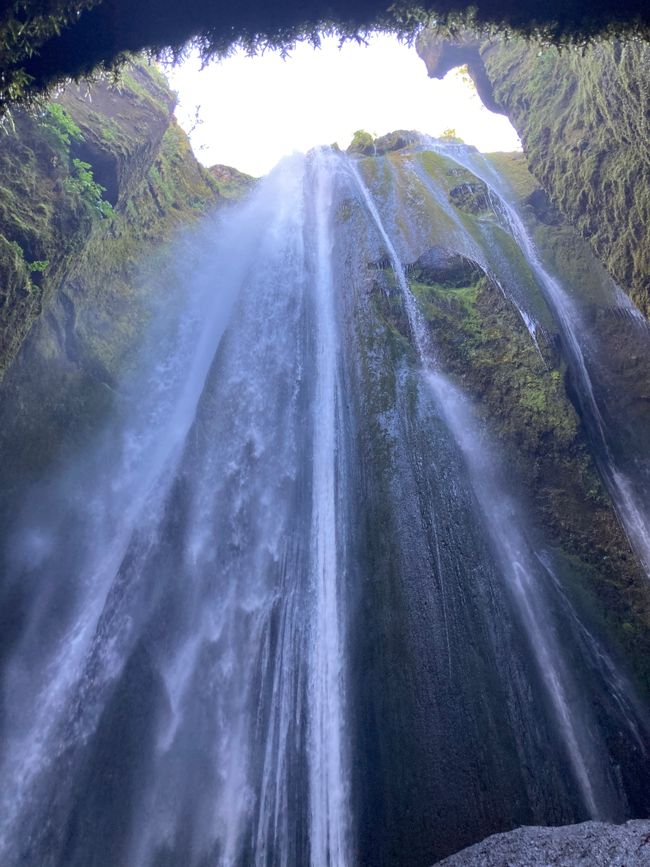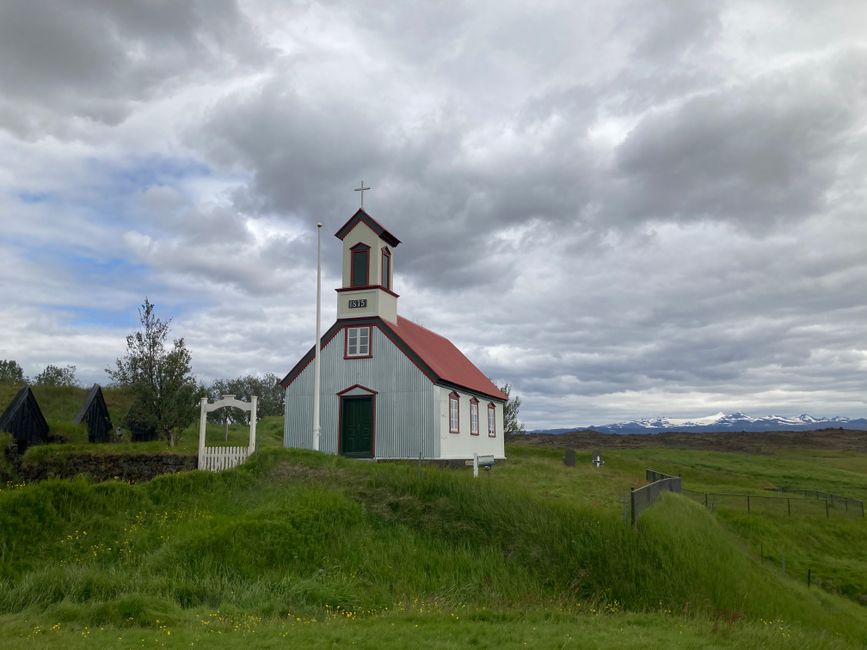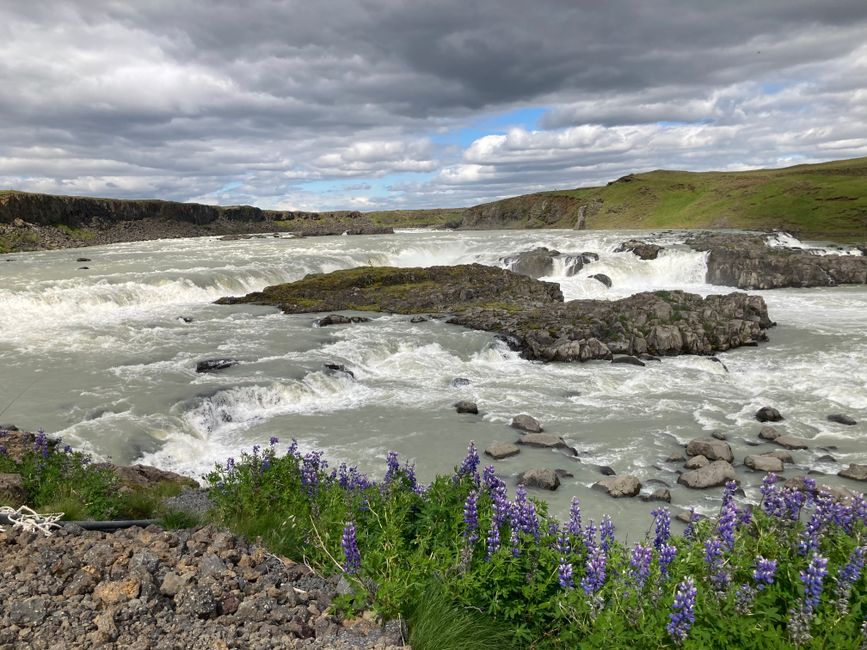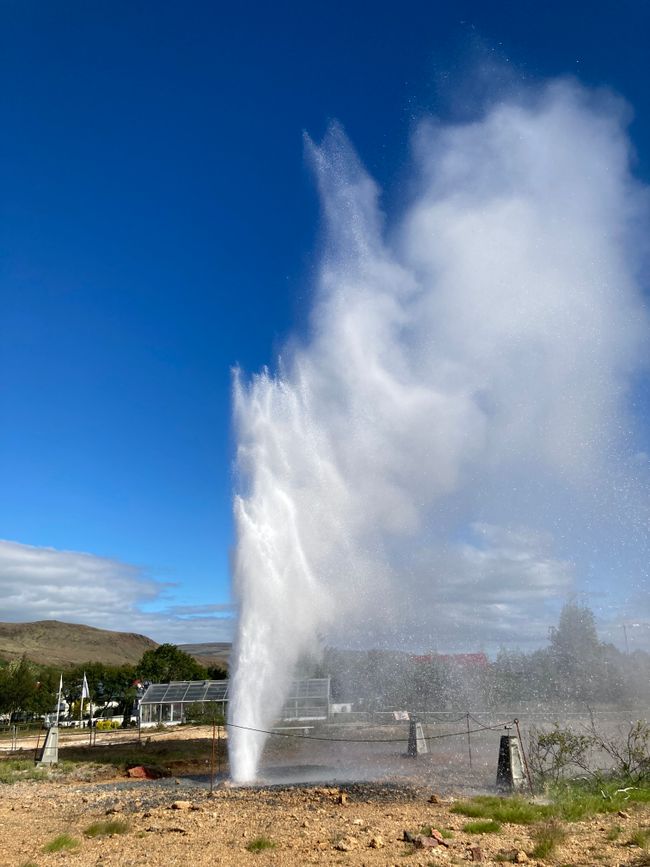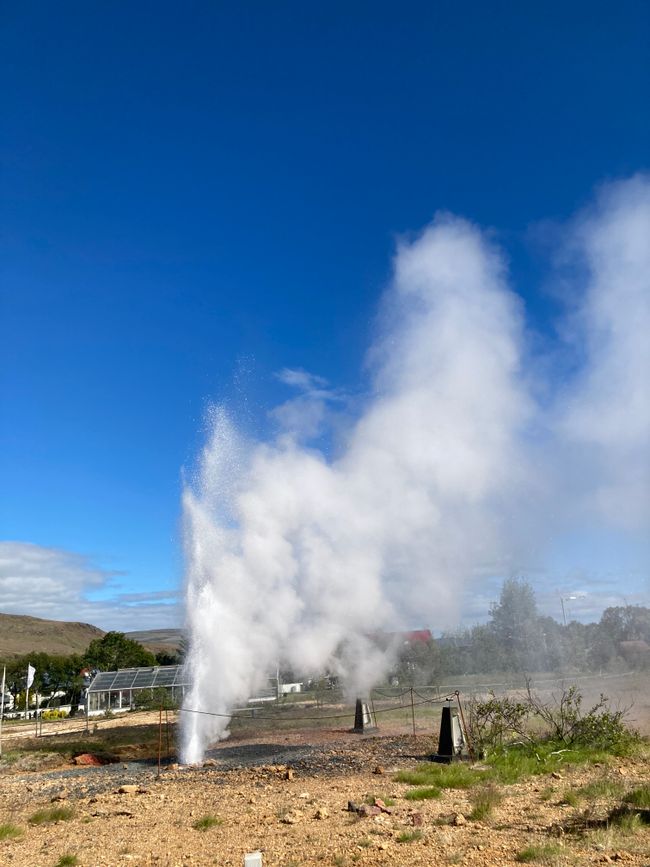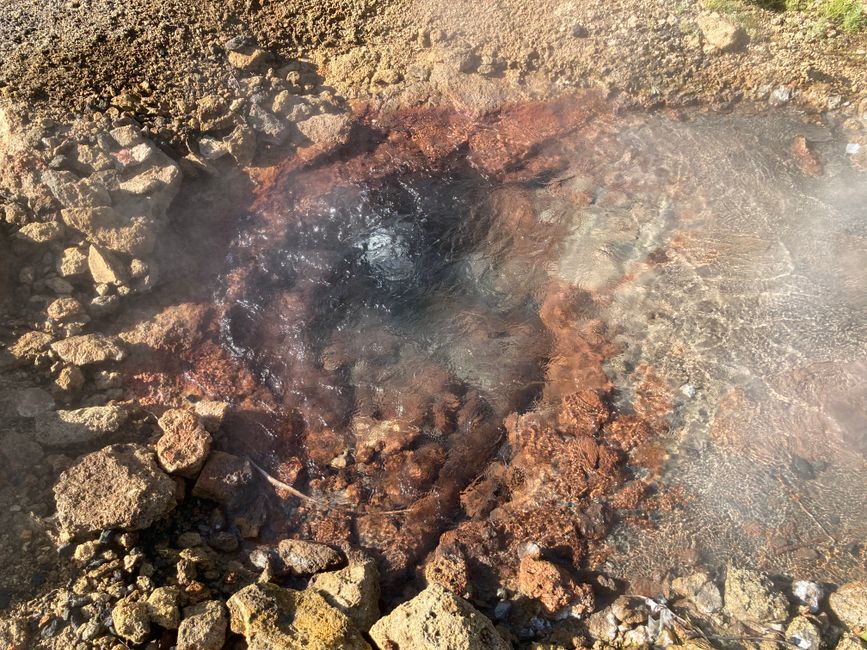Islanti Päivä 6: Vesi kylmää ja kuumaa
Julkaistu: 25.06.2022
Tilaa uutiskirje
It doesn't get really dark at all, the sun shines into our room from about 4:00 am, but that doesn't stop us from sleeping. After the English-rich breakfast, we visit the first waterfall, Seljalandsfoss. It has the charm that a large cave has formed behind it, through which a hiking trail leads. Because of the strong wind, you get showered on it, whether you want to or not. But not just a little spray, no, it means well with us and showers us with "buckets of cold water", which - foolishly without a hood - literally runs down my back. But never mind, it's sunny today.
The Gljufarbui is 530 meters away, if you want to go the last 10 meters, you have to balance through a narrow gorge on lava stones through the stream. Susanne skips that, I get a wet shoe and squeeze out the sock afterwards :)
Then we visit the LAVA Museum, which impressively and attractively presents the volcanic geology of Iceland. The highlight: from the roof you can see four of the most important volcanoes, the last eruption was in 2021.
The next stop are the abandoned turf houses in Keldur, half buried in the ground stone houses with a grass roof, which were inhabited until 1947 and now serve as an open-air museum.
Also very impressive because of its size and incredible amount of water is the Urridafoss, which can be observed from above in a kind of canyon.
Right next to our hotel is the Hveragerdi geothermal park, which provides a first impression of sulfur springs and geysers. The first geyser eruption scares us so much with its explosive sound that we hold the camera crooked or press the wrong button, but luckily there is a second eruption about 15 minutes later.
In the hotel, the energy of the hot springs is used for a swimming pool and a hot pot, where we end the evening in mild sun. The "sauna" is a small wooden hut next to the pool, where the hot sulfur water flows directly from the ground under the wooden benches. You have to like it, Susanne doesn't. Allegedly, the minerals from the hot springs are good for the skin, and the mud is also applied to skin diseases.
Tilaa uutiskirje
Vastaus
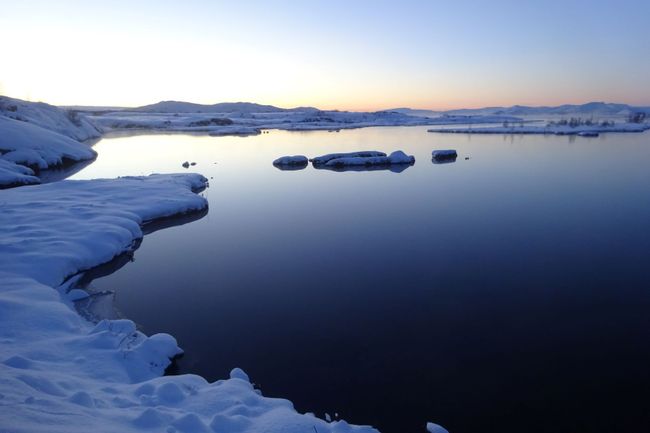
Matkaraportit Islanti
